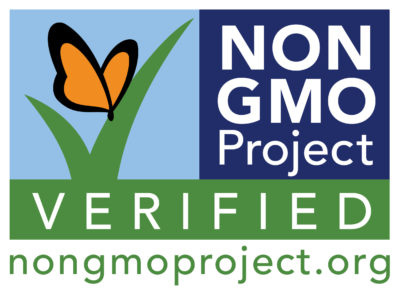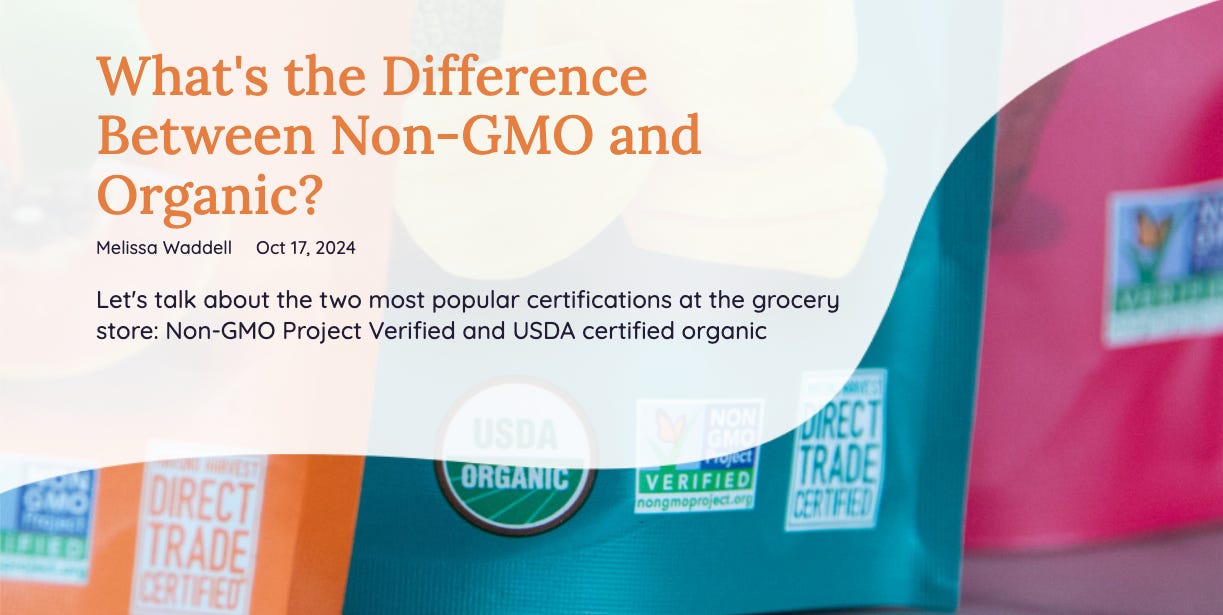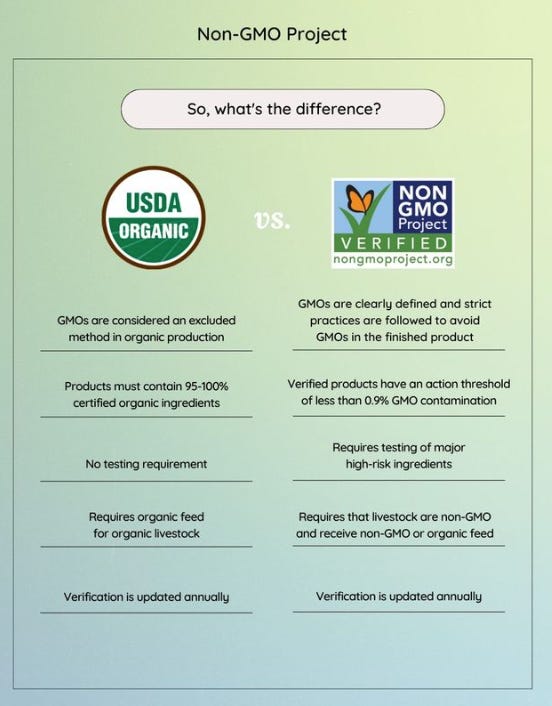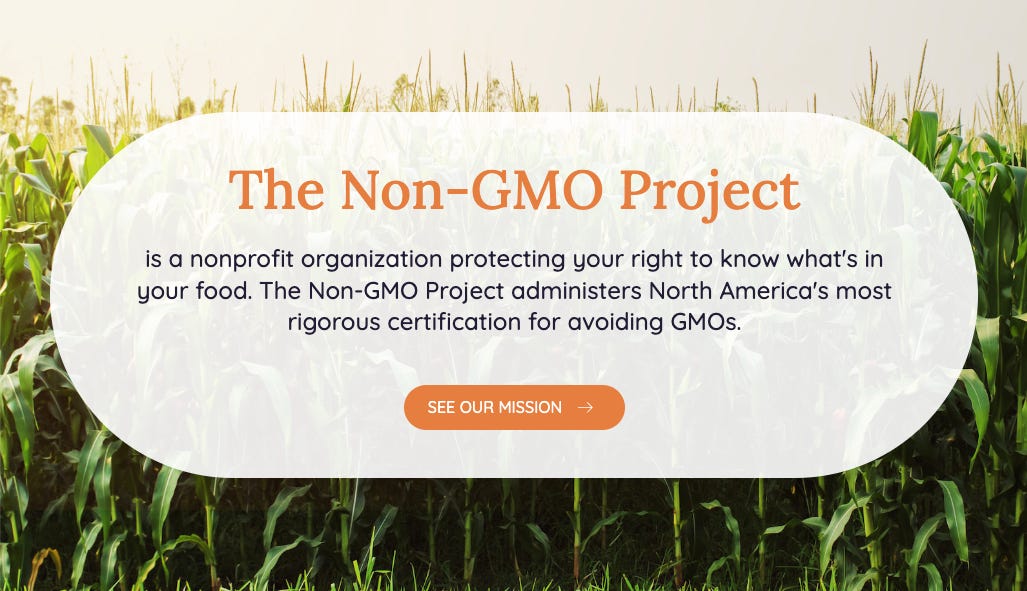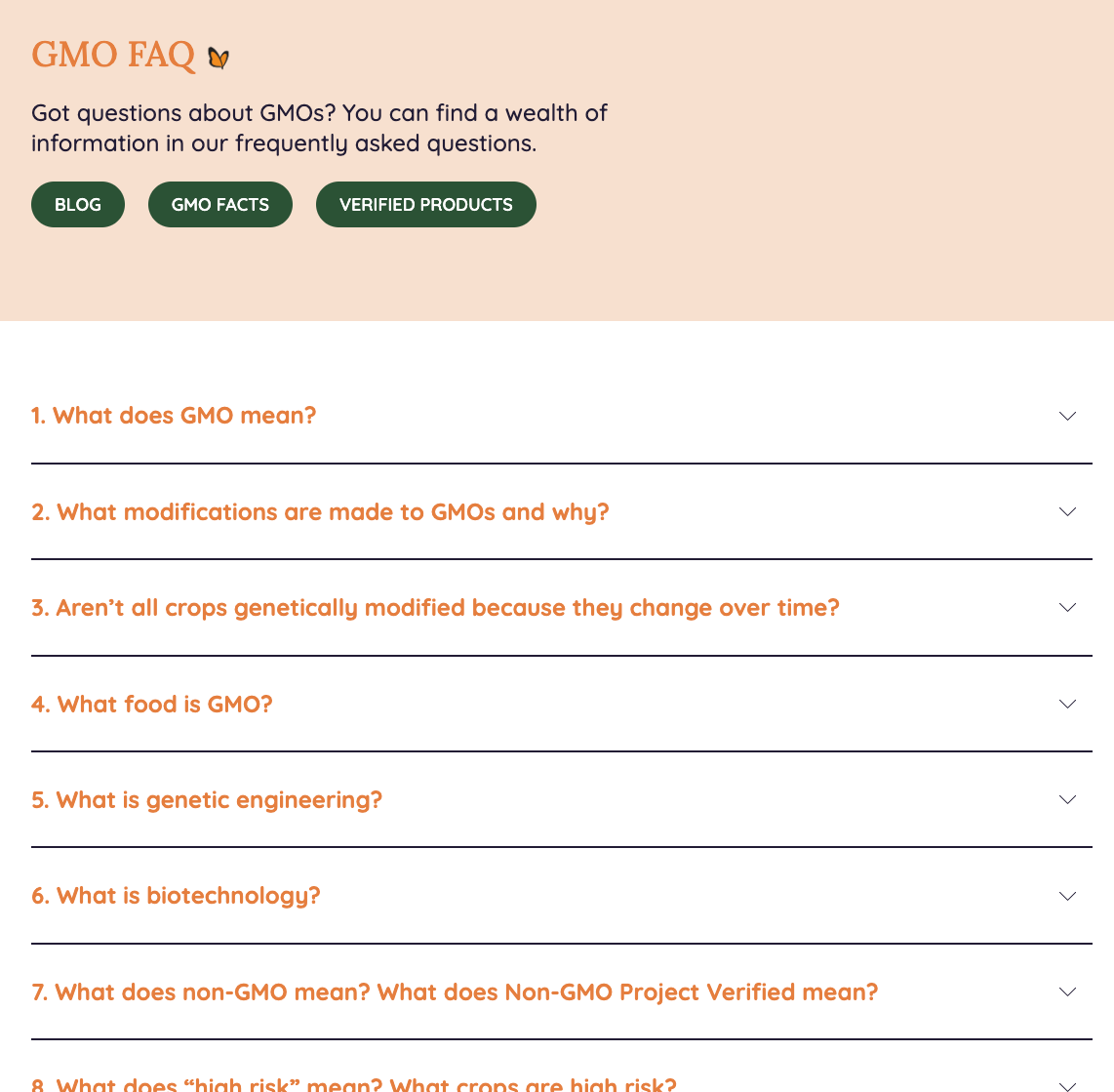Non-GMO Project: What's the Difference Between Non-GMO and Organic?
Let's talk about the two most popular certifications at the grocery store: Non-GMO Project Verified and USDA certified organic. (Melissa Waddell, Oct 17, 2024)
I’m flat reposting a recent useful article from Non-GMO Project Blog
I figure this may be handy to put into your archives to refer back to later.
Source: Non-GMO Project
What's the Difference Between Non-GMO and Organic?
Melissa Waddell, Oct 17, 2024
Let's talk about the two most popular certifications at the grocery store: Non-GMO Project Verified and USDA certified organic
Non-GMO Project Verified and USDA certified organic are the two most popular clean food labels at the grocery store.1 However, confusion persists about how the two certifications overlap and where they differ. "Is organic non-GMO?" is a common question among shoppers and eaters.
Let's delve into the world of organic and non-GMO foods to understand their similarities and differences — and why they're both crucial for our food system.
Defining organic and non-GMO
USDA certified organic is a holistic certification that covers a wide range of food production practices. It sets rules for how animals are raised, how crops are grown, how pests are managed and more. Organic production excludes the use of synthetic pesticides, chemical fertilizers and genetically modified organisms (GMOs).
Non-GMO Project Verified is a single-issue certification that focuses solely on GMOs. Our definition of GMOs is adapted from an international treaty on biosafety. Working from a clear and comprehensive definition means so-called "new GMOs," including GMOs made from new genomic techniques, are considered GMOs under the Non-GMO Project Standard. Many of these are entering the market unlabeled and unregulated.
In short, while both certifications exclude GMOs, they approach this goal from different angles — a targeted approach for the Non-GMO Project and a holistic one for USDA organic. Also, the two programs use distinct tools and methods to accomplish their aims. The following table compares Non-GMO Project Verified and USDA certified organic and outlines the key similarities and differences between the two.
The following table compares Non-GMO Project Verified and USDA certified organic and outlines the key similarities and differences between the two.
The Non-GMO Project clearly defines GMOs and requires testing of major, high-risk ingredients. By contrast, organic does not require testing; products must contain 95-100% certified organic ingredients. USDA organic requires organic feed for certified livestock, while Non-GMO Project Verified requires that livestock are non-GMO and their feed is non-GMO or organic. Both certifications must be renewed annually.
How the programs work
Organic certification and Non-GMO Project verification are two very different processes, from the administrative bodies in charge to what's eligible for certification.
Organic certification is a federal program overseen by the Department of Agriculture (USDA) in the United States and by the Canadian Food Inspection Agency (CFIA) in Canada. To gain organic certification, farmers must develop and implement an "organic system plan" that covers a range of practices, such as preserving soil health, crop rotations, pest management and livestock care. Farmers seeking organic certification must abstain from non-organic product practices — including synthetic fertilizers, pesticides, and GMOs — for three years before their operations may be considered organic.
Non-GMO Project verification is a third-party certification administered by a nonprofit organization. Food and personal care products that are in compliance with the Non-GMO Project Standard are eligible for verification; brands, farms or processing facilities are not. Product evaluation includes measures such as supply chain segregation and testing of major high-risk ingredients to ensure compliance. Because products are evaluated one by one, there is no transition period for producers.
Testing: a fundamental difference
One of the most significant differences between these certifications is their approach to testing. The Non-GMO Project requires testing for all major, testable, high-risk ingredients to ensure they come from non-GMO sources. The Project requires legally binding documentation, such as affidavits for untestable high-risk ingredients.
In contrast, the National Organic Program does not require testing for GMOs. GMOs are considered an "excluded method" under organic regulations, but no mechanisms exist to detect or address contamination. The phrase "organic is always non-GMO" is based on the idea that a producer, having followed their organic system plan, will not have used GMOs. However, this doesn't account for accidental contamination.
The reality of GMO contamination
Once genetically modified organisms are released into the environment, they cannot be recalled, and containment of GMO crops has been a persistent problem. Pollen from GMO crops is carried by wind or wildlife, potentially contaminating non-GMO and organic crops and their wild relatives. The Non-GMO Project's testing requirement is crucial to protecting the non-GMO food supply because of the risk of GMO contamination.
Contamination can spell disaster for farmers and manufacturers whose livelihoods depend on avoiding GMOs. If their products are Non-GMO Project Verified or certified organic, or if they are selling in foreign markets where GMOs are restricted or banned, GMO contamination can put them out of business.
Sadly, contamination is all too common. A 2014 survey of organic producers found that a third of respondents had dealt with GMO contamination on their farms, and more than half of those who experienced contamination had their goods rejected by buyers for that reason. The potential financial losses caused by GMO contamination have pushed some farmers away from organic production altogether.
What's an "action threshold"?
An "action threshold" is a metric used to evaluate test results. Action thresholds reflect the complexity of the supply chain and the reality of GMO contamination, helping to make our Standard meaningful and achievable. They are crucial to strong certifications because they protect the program's integrity by helping participants identify and correct contamination events.
An action threshold is not a GMO allowance. The action threshold for contamination in Non-GMO Project Verified products is 0.9%, which is the same level that triggers mandatory labeling in the EU.
However, USDA organic certification does not indicate action thresholds for contamination by GMOs. This makes sense under a process-based organic certification, which does not require testing.
Emerging GMO technologies
Genetic engineering is evolving quickly. Products made from new techniques, including gene editing, synthetic biology and molecular farming, are entering the marketplace unlabeled and unregulated, posing new risks to organic and non-GMO producers. The Non-GMO Project Product Verification Program keeps pace with the latest GMO technologies by clearly defining and testing major, high-risk ingredients and monitoring industry developments.
As a federal program, organic certification may be slower to adapt to rapid developments. For example, in 2018 and 2019, the National Organic Standards Board recommended changes and updates to the language used for GMOs, but the proposed changes have yet to be integrated.
How non-GMO supports organic
Far from being competitors, Non-GMO Project verification and organic certification complement each other in several ways:
Non-GMO as a stepping stone — Non-GMO Project verification can serve as an on-ramp to organic farming. It's often one of the first steps producers take when transitioning to organic.
Financial support during transition — Non-GMO farming can provide a market for farmers transitioning to organic production, helping to offset the financial burden of a 3 to 4-year transition period.
Reduced contamination risk — Non-GMO farming practices in surrounding areas can create a buffer zone for organic farms, reducing the risk of GMO contamination.
Supply chain support — The Non-GMO Project's work helps expand access to non-GMO ingredients and increases traceability throughout the supply chain.
The gold standard: organic and non-GMO
While each certification provides valuable insights into food production, many consider the combination of USDA organic certification and Non-GMO Project verification to be the gold standard for food. This combination assures shoppers and eaters of holistic, sustainable farming practices along with rigorous GMO avoidance and testing.
Research shows that products displaying both Non-GMO Project Verified and USDA organic labels are more popular than comparable products with one label or the other. This reflects consumers' desire for food that meets the highest standards of GMO avoidance and holistic agriculture modeled on natural systems.
Both USDA certified organic and Non-GMO Project Verified play crucial roles in our food system. While organic certification offers a roadmap for agriculture based on natural systems, Non-GMO Project verification provides the rigorous testing and monitoring necessary to ensure GMO avoidance in an increasingly complex biotechnology landscape.
Whether you choose organic, non-GMO — or both — you support a cleaner, more transparent food supply for all.
I’ve supported the Non-GMO Project for a long time. I think they are a reputable institution that is providing some important transparency for consumers regarding our food industry. If you find value in their mission, the link to support them by donation is here.
[https://www.nongmoproject.org/donate]
They have a good FAQ on their website:
Another handy tool I have used is the “buycott” app. It is a smartphone app with a camera barcode scanner function that lets you find out things about the product you are holding while you are still in the store. You can choose campaigns to support or avoid and the app will tell you if the product or company fits your goals. It is pretty neat. Just for fun (or to get really depressed about what may be in your cabinets that you previously thought was healthy) you can download it and scan the products already in your home.
While of course I think everyone who is eligible in the US should vote this week. I am convinced in the long run our most powerful voting tool is our dollars. Years ago I read that if only 5% of consumers decided to purchase mostly Non-GMO food the economics of the industry would rapidly transform. Within one growing season Non-GMO farming would be understood to be more profitable than the currently much more popular farming methods using mutant frankenstein seeds that require toxic chemicals in their process.
The MAHA movement is encouraging to see, and I support it, but in reality, it is us, the consumers, that haven’t cared enough about the poison we put into our mouths to effectuate a change. If 5% of the country decided they were going to avoid the toxic food dyes that are needlessly added to the diabetes promoting crappy morning bowl of fake sugar crunch, the dyes would disappear overnight.
Check out the "buycott” app here, and you can start voting with your dollars.
All the best,
-SuperSpreader



